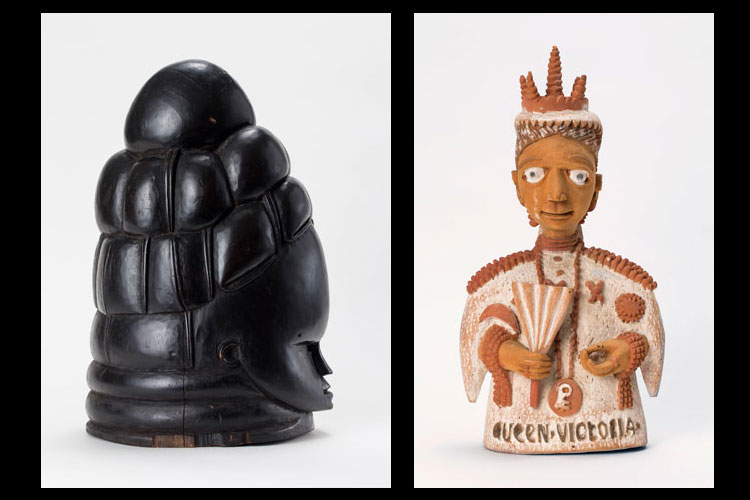Hearst Museum opens digital portal to its entire collections
For the first time, the public can view online images and documentation of the museum's more than 3 million objects

May 15, 2018

Liberian helmet mask made from black-stained gum wood (Photo courtesy of Hearst Museum)
UC Berkeley’s Phoebe A. Hearst Museum of Anthropology, whose world-class collections range from Egyptian mummy sarcophagi to Peruvian textiles to Native American baskets, has opened a digital portal to expand public access to its collections of more than 3 million objects, photographs, films and sound recordings.
Two years in the making, the Hearst Museum Portal will enable researchers and the public at large to go online and examine all of the museum’s cataloged objects and much of the accompanying documentation via a user-friendly interface.
“In line with the Hearst Museum’s vision of serving as a place where cultures connect, we view the portal as contributing to the resources on offer to our stakeholders,” said Hearst Museum Director Benjamin Porter, an associate professor of Near Eastern archaeology.
With an estimated 3.8 million objects, the museum, housed in the campus’s Kroeber Hall, boasts among the nation’s largest anthropological collections.
Michael Black, the museum’s head of research and information, led the project with input from a wide range of stakeholders, including UC Berkeley anthropology students. Staff and volunteers photographed roughly 2,000 items each week at stations with special lighting.

Ashley Jerbic, who majored in art practice and art history, documents an Egyptian stone sarcophagus lid.
“I definitely wanted to be able to explore the collections visually,” said Alex Perkins, an anthropology major who worked on the project. “There are so many objects with fascinating photographs and being able to easily access those was one of the big things I hoped to see in the new portal.”
The Hearst Museum teamed up with UC Berkeley’s Research IT Museum Informatics program to create the portal.
“This is a great example of how technology can be a strategic enabler of our campus mission,” said Jenn Stringer, UC Berkeley’s chief academic technology officer and assistant vice chancellor for teaching and learning.
The portal links directly to the Hearst Museum’s database and can be explored using simple Google-like keyword queries as well as more advanced multifield searches.
In particular, the portal is designed to serve people with cultural connections to societies represented in the Hearst Museum’s collections. They include Native Californian educators, spiritual leaders, repatriation coordinators, tribal government officials and artists, who rank among the most frequent visitors to the museum’s archives and storage facilities.
“We are pleased to serve as a resource for Native California across a variety of research areas, and the portal will greatly expand that access,” said Jordan Jacobs, the Hearst Museum’s head of cultural policy and repatriation.
With guidance from the Hearst Museum’s Native American Advisory Council (NAAC), access to images of human remains, funerary objects and objects known as “charm stones” is restricted as part of a greater effort to collaborate with Native American communities.
For example, people seeking to view images of restricted objects via the portal will need to contact the museum to arrange for permission.

Anthropology major Devlin Gandy photographs arrow made by Ishi (Photo by Chris Hoffman)
“The museum has listened to our input and we have shaped the policies that will help guide them into the future,” said NAAC vice chairperson Kesner Flores.
Founded in 1901 by philanthropist Phoebe Apperson Hearst, the museum’s collections span the globe and document nearly 2 million years of human development and innovation.
Hearst launched the museum, originally located in San Francisco, with her personal collections of objects, photographs and audio recordings from expeditions to Egypt, Peru, Italy, California and the American Southwest.